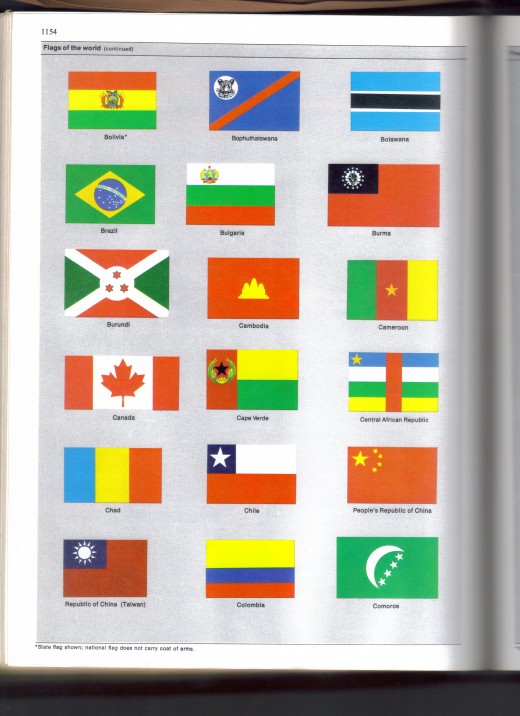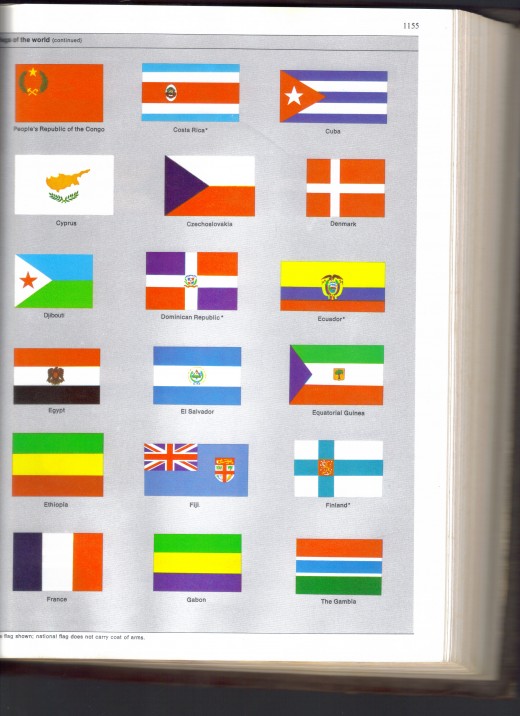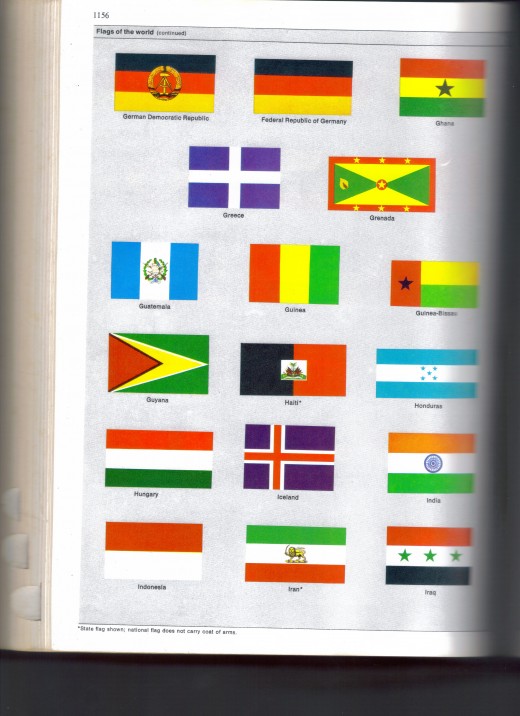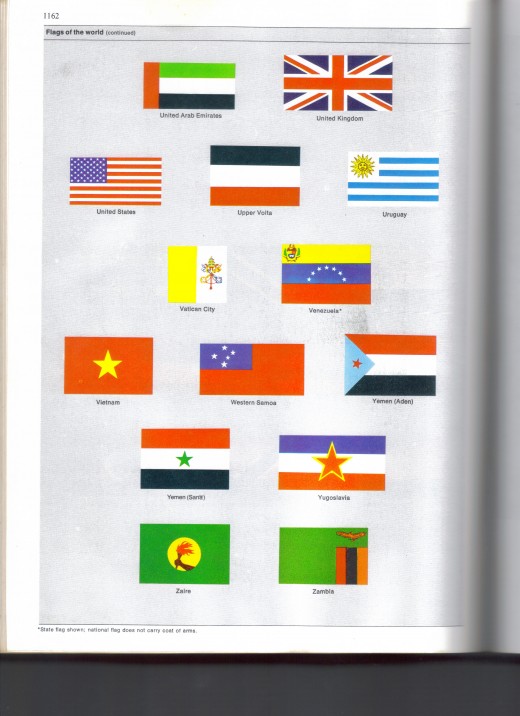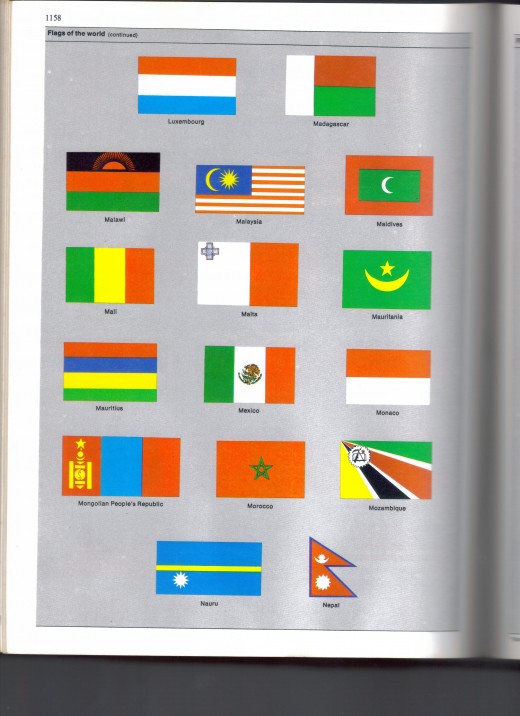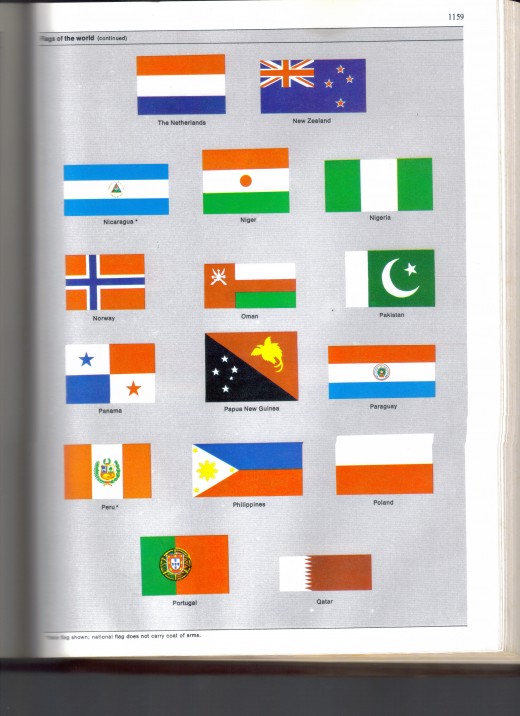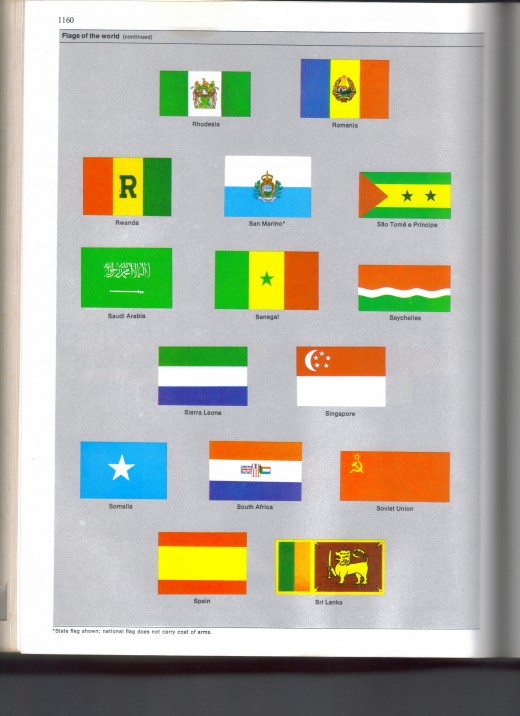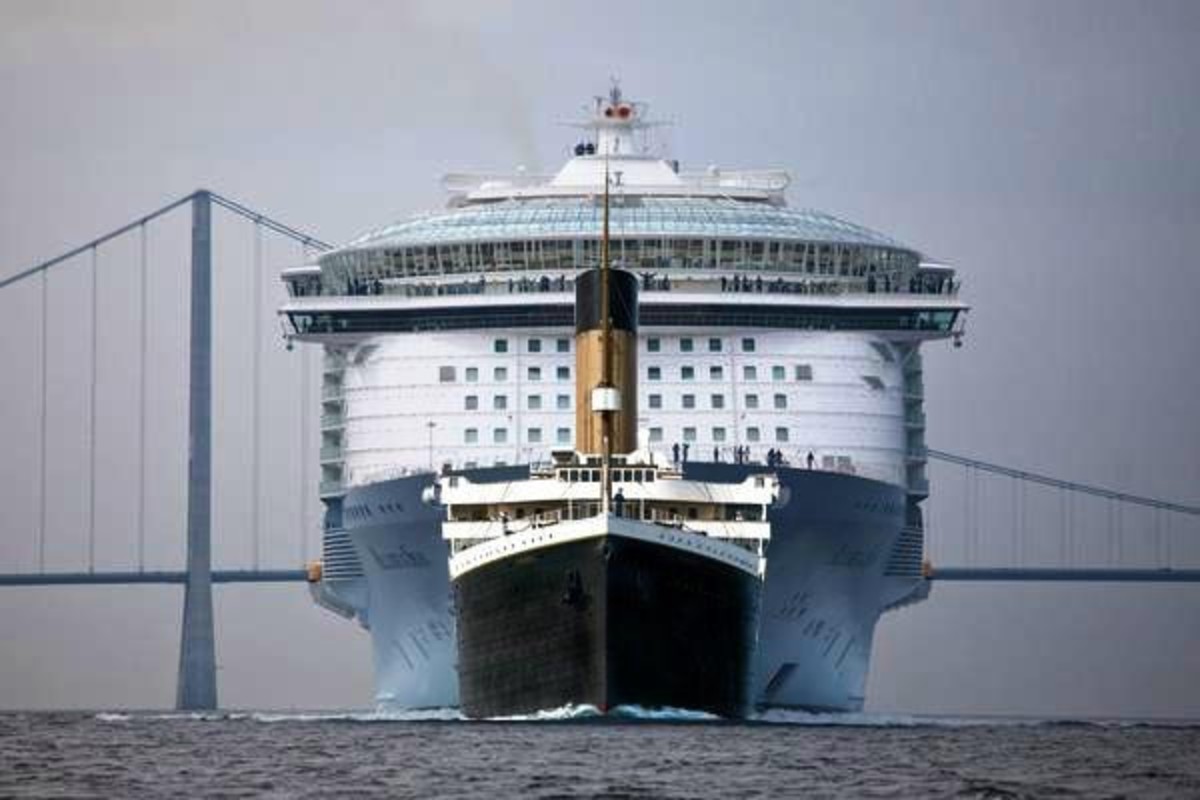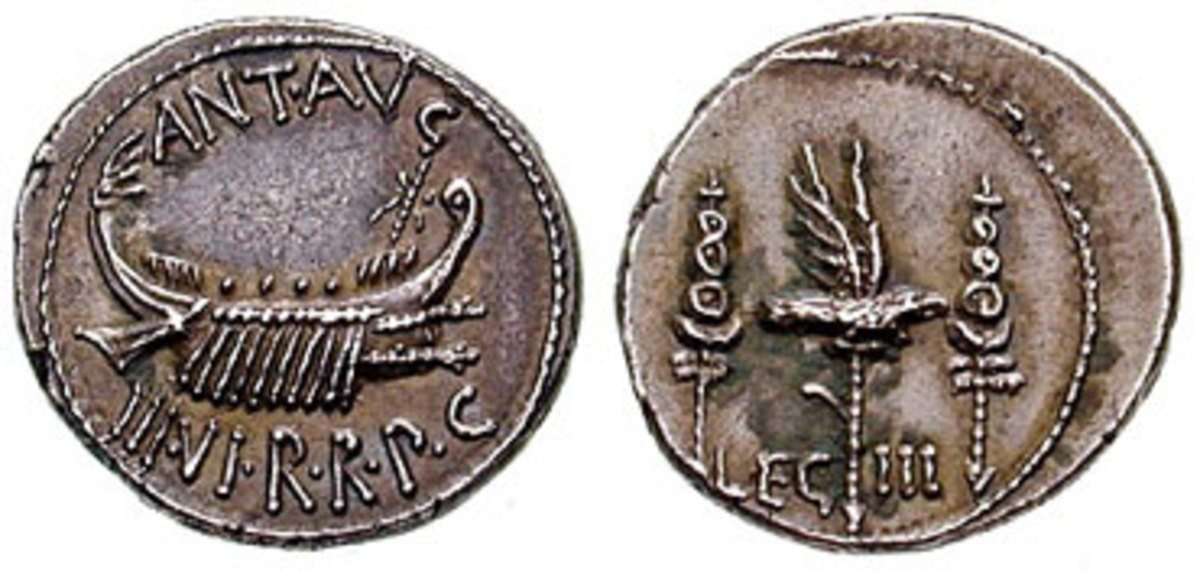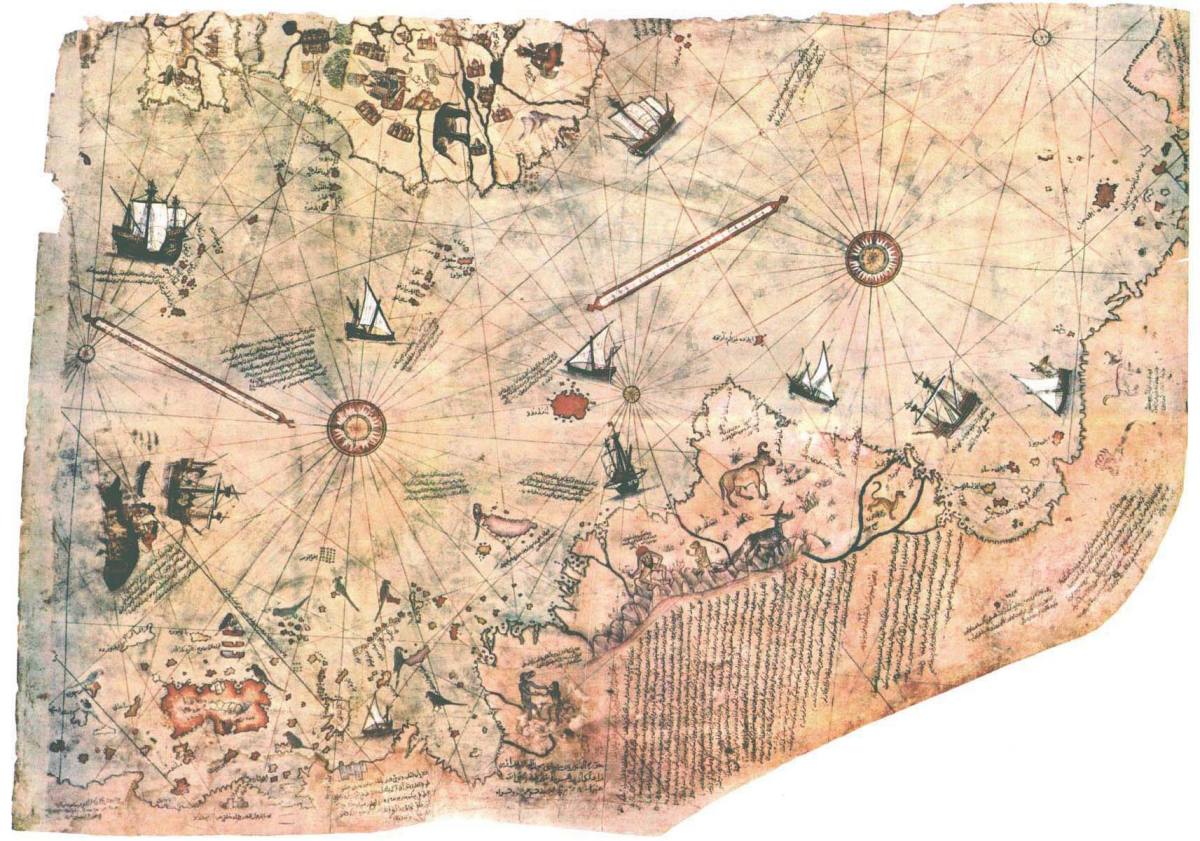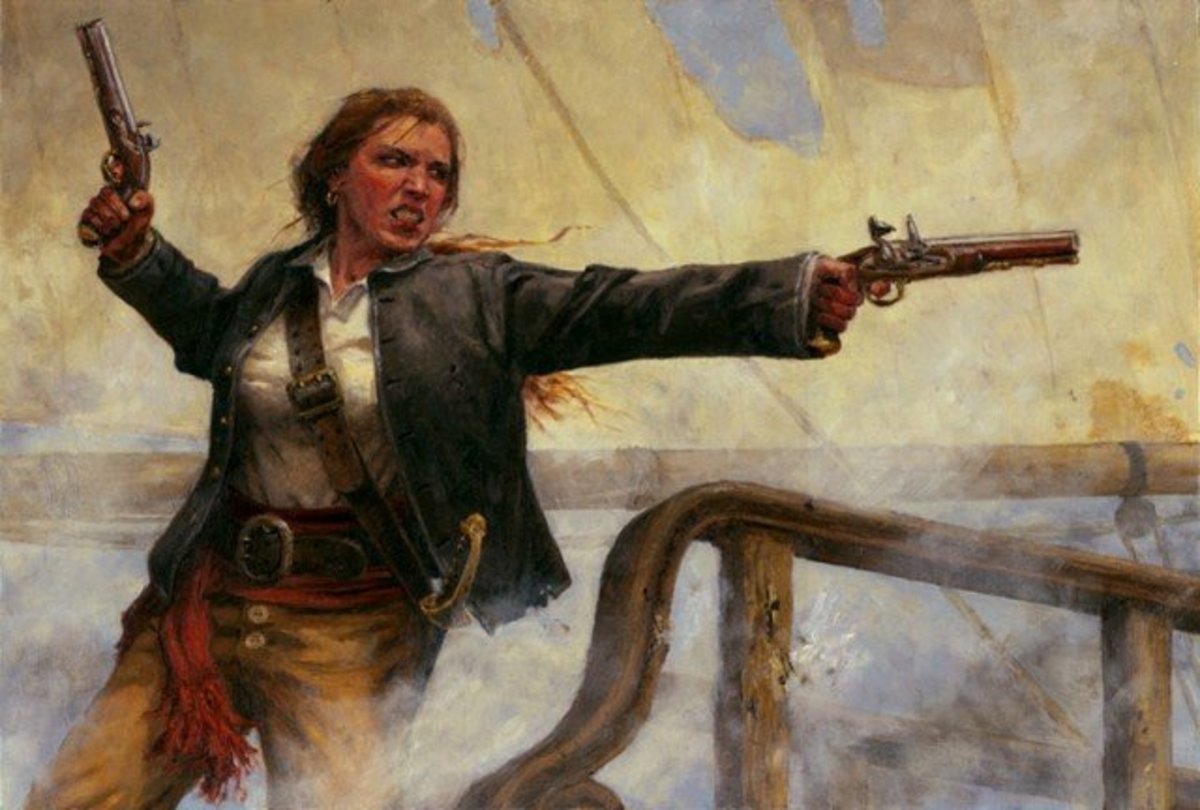World's History of National Flags. They are Displays of a Country's Pride.
Flags of the World
Click thumbnail to view full-size








Flags from Around the World
FLAGS are a symbol of pride.
Distinct in design and proudly displayed for all to see.
A HISTORY OF FLAGS.
Since early times people have displayed flags and various other objects to show their nationality , or their allegiances. Today, in addition to representing nations and other political entities, flags are used to represent organizations, such as the Boy Scouts and Girl Scouts, political alliances, such as the NATO (North Atlantic Treaty Organization, and international bodies, such as the United Nations and the Red Cross.
Probably the first real flags were the cloth streamers used by the Egyptians as early as 5000 AC, the Aztecs carried fans made of green quetzal feathers, and the Assyrians bore disks at the top of poles with an image of a running bull on them.
One of the first true flags was the vexillum carried by Roman cavalry. It was a square piece of fringed cloth hung on a crossbar at the end of a spear. Europeans carried their flags in this manner until the Middle Ages, when they attached their flags to the sides of staffs. The Romans originated the custom of hanging their battle standards in their temples. This practice continued in Christian churches down to modern churches.
During the Middle Ages and after the Crusades, the first "national" flags were adopted. Many of the leaders of that time adopted the flag of their patron saint to represent their country. In England, for example, the cross of St. George was adopted in the 13th century. Toward the end of the Middle Ages, flags had become accepted symbols of nations, kings, organizations, cities, and guilds. For instance, a black frag with three white candles represented the candle makers of Bayeux, France.
At first, banners were square, and for a time the size of the banner indicated the rank of the owner. Later, flags were longer and narrower, similar to proportion of the present flag of the united states.
Early European flags usually followed the rules of heraldry. Beginning in the late 1700's especially in the New World, flags were designed freely with no thought of the ruses of heraldry.
Flag terminology:
- Badge: an emblem or device displayed on a flag, such as a state seal on some of the state flags of the United States.
- Canton: upper corner nearest the staff. This is the point of honor in a flag. The canton is called the union in the United States flag.
- Dipping: a practice especially of merchant ships, in which they lower their flag in salute in meeting a naval vessel.
- Ensign: a flag flown by warships as a national symbol. (the U.S. and certain other countries, the national flag, and the ensign are the same).
- Field: the part of a flag outside the canton, or the background color af each division of a flag.
- Finial: an ornamental figure often placed on top of the truck of a flagstaff.
- Flagstaff: the pole on which a flag is displayed.
- Fly: the length of a flag from staff to the free end, or the outer end, farthest from the staff (often called the fly end).
- Government Flag: a flag flown on government buildings, embassies in foreign countries, and by government officials as a national symbol.
- Ground: same as the field.
- Guidon: a small flag carried by a military unit to guide marchers.
- Halyard: the ropes used to raise and lower a flag.
- Hoist: the height of a flag from top to bottom, or the part closest to the staff.
- Jack: a small flag, often square, flown from the prow of a ship.
- Merchant Flag: a flag flown by commercial ships as a national symbol.
- National Colors: the U.S. flag carried by foot troops and by supreme commanders, usually size 4 ft 4in. x 5 ft 6 in.
- National Flag: A flag flown by the citizens of a country as the symbol of their nation.
- National Standard: the U.S. flag flown by mechanized and motorized troops, usual size 3 ft x 4 ft.
- Pennant: a flag which tapers toward the fly.
- Run Up the Flag: means to hoist a flag.
- Strike the Flag: means to lower a flag.
- Swallowtail: a flag whose fly is divided into two or three distinct tails.
- Truck: a cap, at the top of a flagstaff with holes for the halyard.
- Union: a badge symbolizing the federation of several political parts, it may appear on any part of a flag, or constitute the whole of a flag.
- Vexillology: the scientific study of flag history symbolism.
Note: information courtesy of the Britannica - Webster (1768 - 1981).
And of course we cannot do a hub on flags around the world without a brief history of the U.S. confederate flag, still flown in the deep south states. (see brief videos below).
d.william 04/05/2011
- 101 Strangest Laws From Around The World
A look at 101 of the strangest and funniest laws from around the world. - Harley Davidson Flags
Here's a cool selection of Harley Davidson flags to fly in the garden, have as a decorative wall hanging or attached to your bike. If you are a part of the Harley fan family, show it with pride with these...


